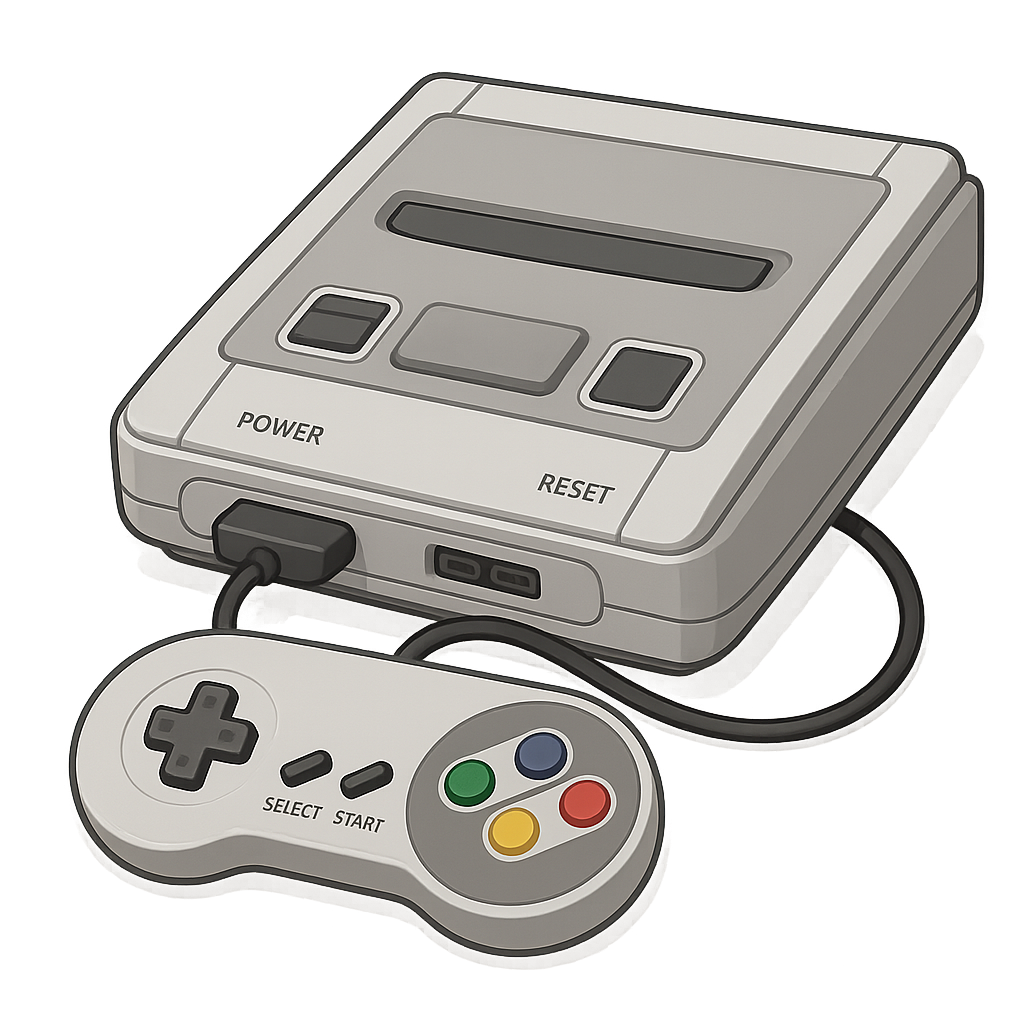The Tale of the Video Game
Hello there. You can call me Video Games. I am the magic that happens when you press a button and suddenly become a brave knight, a speedy race car driver, or a clever detective solving a mystery. I can take you to shimmering castles in the sky, deep oceans filled with glowing creatures, or even to distant galaxies swirling with stars. With me, you can build entire cities from scratch or team up with your friends to go on grand adventures. It's a wonderful feeling, isn't it. To hold a controller and know that a whole new world is waiting for you. But before I could create these amazing, colorful worlds with epic stories and exciting characters, I was something much, much simpler. Believe it or not, my life began as just a tiny, bouncing blip of light on a very serious-looking screen in a place built for science.
My story begins long before flashy graphics and epic theme music. It was a time of serious scientific work, but one scientist thought that science could also be fun. His name was William Higinbotham, and he worked at a place called Brookhaven National Laboratory. On October 18th, 1958, he decided to create me to liven up the lab's annual open house. He wanted to show visitors that the work they did wasn't just about complicated charts and numbers. So, he used a small round screen, the kind used for scientific instruments, and brought my very first version to life. He called it 'Tennis for Two.' I wasn't much to look at back then. I was just a little dot of light that players could bounce back and forth over a horizontal line that represented a net. Two people would use controllers with knobs and buttons to hit me back and forth. It was simple, but it was amazing. For the first time, people were interacting with a picture on a screen just for fun. Hundreds of people lined up to play that day, their faces lit up with joy and surprise. I wasn't created to be sold in a store or to become famous; I was born from a spark of creativity, just to prove that even in a serious laboratory, there was room for a little bit of play.
For a long time, I lived only in laboratories and university computer rooms. I was a secret that only scientists and students knew about. But one clever inventor had a bigger dream for me. His name was Ralph Baer, and many people call him my 'father' because he was the one who imagined me not just as a scientific curiosity, but as something every family could enjoy together. Around 1966, he had a brilliant idea while waiting for a bus. Why couldn't people play games on the one screen that was already in almost every home: the television. He and his team worked in secret on a project, creating a special device he called the 'Brown Box.' It was a simple wooden box with wires coming out of it, but it was pure magic. When hooked up to a TV, it let people play all sorts of games. You could play a chase game where two squares ran after each other, or a ping-pong game that felt a lot like 'Tennis for Two.' He showed his invention to a company that made televisions, and they loved it. In 1972, the 'Brown Box' was transformed into the Magnavox Odyssey, the very first home video game console. At last, I had left the laboratory and arrived in living rooms across the country. Families could gather around the television, not just to watch a show, but to play together.
The same year I arrived in homes, 1972, I also had my first truly massive hit. A man named Nolan Bushnell, who started a company called Atari, created a game so simple and so fun that it took the world by storm. The game was Pong. It was an electronic version of table tennis, with two paddles on either side of the screen and a small square 'ball' that went 'pong' every time it was hit. Nolan put the first Pong machine in a local tavern, and soon, it was so popular that it broke down because it was overflowing with coins. People lined up around the block just for a chance to play. Arcades started popping up everywhere, filled with the glowing screens and exciting sounds of Pong. It was more than just a game; it was an event. It was the moment I realized I wasn't just a fun little experiment anymore. I was something that brought people together for a bit of friendly competition and a whole lot of fun. Pong showed everyone that I was here to stay.
Look at me now. From a simple bouncing dot and two rectangles, I have grown and leveled up in ways my first creators could never have imagined. I am no longer just a blip on a screen; I am vast, three-dimensional worlds bursting with color, sound, and stories. I let you become a hero saving the universe, an architect building a dream city, or a detective solving a puzzling crime. I can connect you with friends who live across the ocean, allowing you to work together as a team to achieve amazing things. My story is always being written, and the most exciting part is that you, the player, are the one writing it. With your imagination and creativity, you help decide what new adventures we will go on next.
Reading Comprehension Questions
Click to see answer
